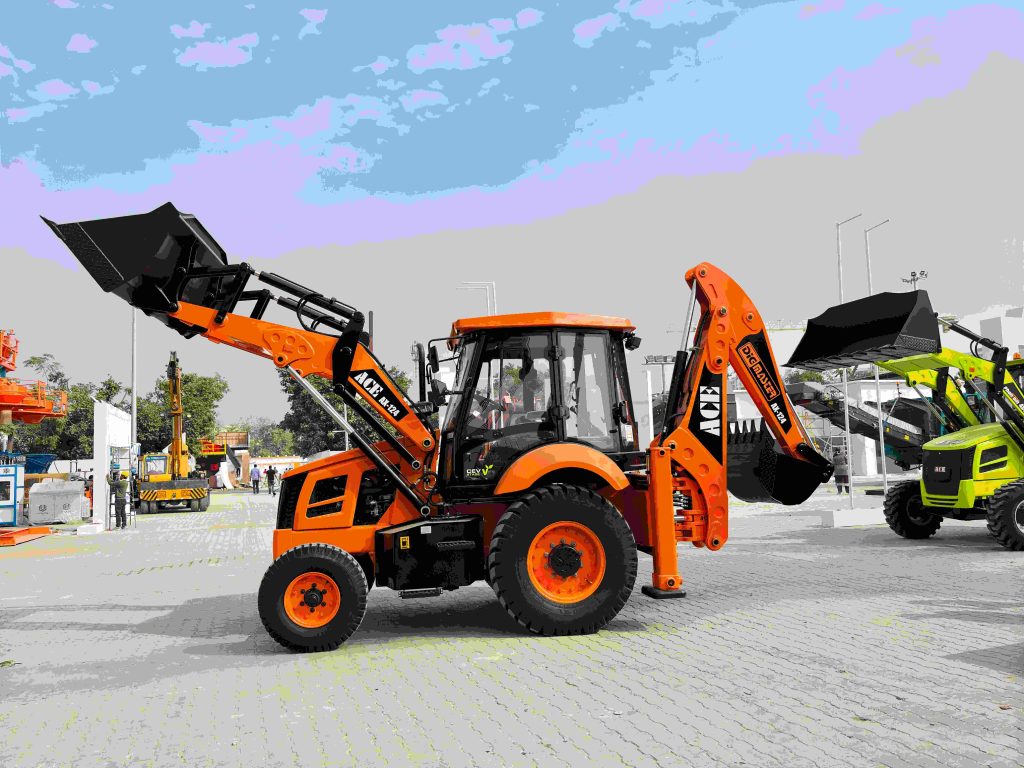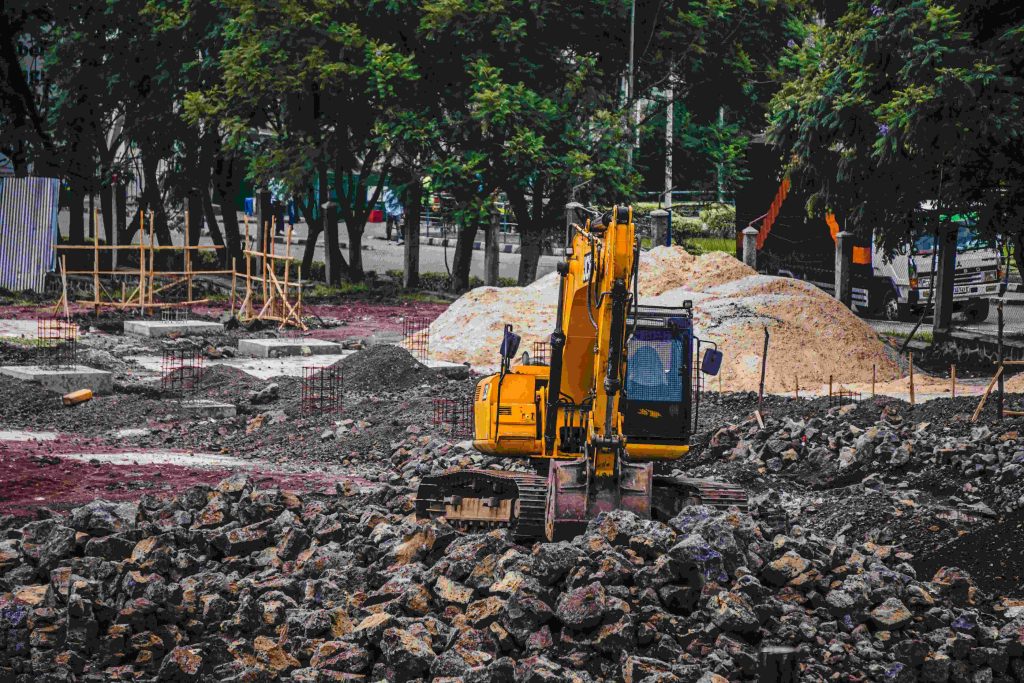How to Select the Right Excavator Bucket for Specific Tasks
However, whatever the task may be, you must ensure that you choose the correct one based on the work that needs to be completed and the material that will be moved and also the efficiency with which this is carried out! It allows you to choose an excavator bucket that improves productivity and matches the particular needs of your construction project.
Key Factors to Consider When Choosing an Excavator Bucket
Material Type and Density
Choosing your excavator bucket will depend on the type and density of material you plan to handle. Buckets made with different types of material vary in strength and durability. For example, if your project requires digging into hard soil or working with soil containing gravel, you need a bucket built of high-strength steel.
Task-Specific Requirements
Every construction or excavation work comes with its own needs to determine which excavator bucket you must choose. A trenching bucket is suitable for trenching applications due to its narrow design that enables it to dig a deep cut. Rock buckets are also effective for loading larger rocks or gravel due to their wide mouths and specially designed tooth plates for faster loading.
If your project has most changes in the angle of operations, a tilt bucket may be your best option for very large changes in operation angles. The buckets can alter their tilt angle through hydraulic cylinders, which means less strain on machine mechanics and lower fuel consumption. Being aware of your project requirements helps you choose a bucket suited for your operation.
Compatibility with Excavator Models
Another important consideration is whether or not the excavator bucket and your machine model are compatible. The buckets themselves differentiate by size, weight, and how they attach. Incompatibility of the bucket can make it work not efficiently or damage your equipment. Pick a bucket that meets your excavator specs, including what size the bucket needs to be, as well as the capacity of the bucket, and the hydraulic system requirements.
Types of Excavator Buckets and Their Applications
General Purpose Buckets
General-purpose buckets are multipurpose tools — ideal for light-duty material handling and general excavation. Frequent usage of them would be more for the projects that commonly contain loose soil or sand. These buckets hit a sweet spot of size and ruggedness but aren’t optimized for one or the other.
If you’re looking for reliable performance across varied applications without investing in multiple specialized tools, general-purpose buckets offer an economical solution.
Heavy-Duty Buckets
Heavy-duty buckets are designed for high-strain conditions where strength is essential. Perfect for abrasive materials like compact soil or rocky ground. These buckets are made with high-tensile steel plates and utilize cast guard blocks for extreme durability.
Rock Buckets
Designed to do heavy work in hard soils and large rock, rock buckets’ large mouths make it easy to load large materials such as boulders or gravel. These buckets integrate a unique form of technology processing and casting guard plates to enhance the durability and working efficiency.
Trenching Buckets
Trenching buckets are narrower than standard options but excel at creating precise trenches required in pipeline installations or drainage systems. Their streamlined design reduces resistance during digging while enhancing depth accuracy.
For professionals involved in utility work or landscaping projects requiring detailed trenching capabilities, these specialized tools provide unmatched precision and reliability.
Enhancing Efficiency with Specialized Attachments
Tilt Buckets for Versatile Operations
Tilt buckets are revolutionary in the excavation world, laying the foundation for never-before-seen versatility and operational efficiency. This clears the excavation style buckets that can change attitude angle with hydraulic cylinders to get your job done at angles without shifting the excavator.
The advantage, apart from reducing mechanical wear, also reduces fuel consumption massively. Tilt buckets are available for 4 to 50 ton models made from high-strength materials. Tilt buckets are a valuable asset for anyone working on tasks that require precision and versatility, like landscaping, grading or trenching.
Skeleton Buckets for Sorting Materials
But skeleton buckets are invaluable for sifting and sorting material during excavation. Constructed using high-strength steel plates and fitted with cast guard blocks, these buckets are ideal for tough conditions such as hard soil with gravel content. They are great for municipal, agricultural, forestry, and water conservancy works, too, thanks to their uniquely designed grille structure that retains larger debris but allows finer materials to pass through.
Recommendations for Kingho Excavator Buckets
Kingho Heavy-Duty Buckets for Challenging Environments
For the more demanding environments, such as compacted soil or rocky terrain, heavy-duty buckets enter the scene. The attachments are made from high-strength steel plates as well as the casting guard blocks, built to last for long hours of heavy use while remaining in top operational condition.
In sectors like mining or even gigantic earthworks where strength is crucial, heavy-duty buckets provide the necessary resilience to handle abrasive components. Having these in your arsenal makes sure that you can keep the quality consistent while getting the project done on time.
Specialized Kingho Rock Buckets for Mining and Quarrying Tasks
Rock buckets are designed for very heavy-duty work, such as hard soils and larger rocks. To some extent, their mouths are large, which makes loading large materials like boulders or rocks easy. They utilize state-of-the-art processing along with casting guard plates to enhance durability and the efficiency at which they work.
These attachments use advanced processing of technology with the development of high-end guard plates for better working gaining efficiency and durability with casting. Besides, Kingho also has quality assurance and testing.
In mining and quarrying activities where robust performance is critical, rock buckets prove indispensable. Their design not only accelerates loading processes but also minimizes downtime caused by wear and tear. Kingho has passed certifications like ISO9001, ISO14001 and so on.
Custom Solutions from Kingho for Specific Project Needs
Whether you are using a machine with a bucket or a specialized attachment, customized attachments ensure that your equipment can be suited to your operation specifics — right down to bucket sizes and shapes or even hydraulic quick hitches!
Customization not only enhances compatibility but also optimizes performance by addressing specific task demands directly. By leveraging personalized solutions, you can achieve greater efficiency and cost savings in the long run. Want to know more about Kingho? Please visit its website!
FAQs
Q1: Why is a tilt bucket more productive than a conventional bucket on an excavator?
A: Tilt buckets enable you to adjust the inclination angle of the bucket with the aid of hydraulic cylinders, which simplifies work because you have to reposition your excavator less often during operations.
Q2: Can you sort all types of materials using skeleton buckets?
A: Skeleton buckets are great for taking out the finer materials from the bigger stuff, but they may not be suitable for clay, which can be very adhesive, due to their grid-type design.
Q3: Are all buckets the same when it comes to duty rating?
A: General-purpose buckets have a light-duty rating, as they are meant for loose soils or sand, while heavy-duty buckets are typically made for more abrasive materials such as packed soil or rock.



